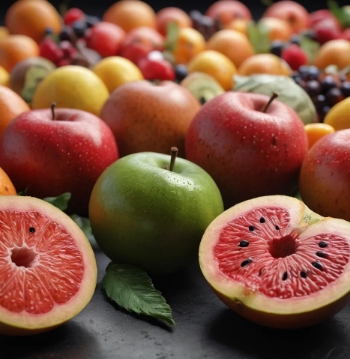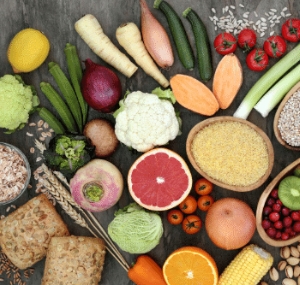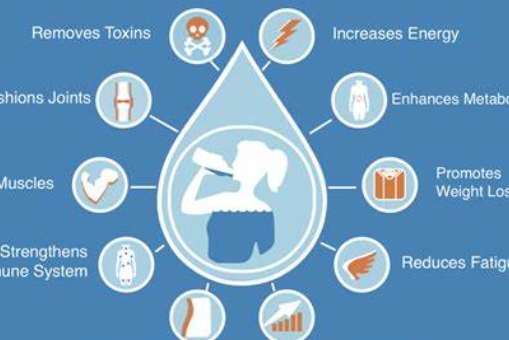Fiber is often overlooked when it comes to nutrition, but it plays a crucial role in maintaining good health. Found in plant-based foods such as fruits, vegetables, grains, and legumes, fiber is an essential nutrient that supports digestive health, regulates blood sugar levels, and helps manage weight. Despite its importance, many people do not consume enough fiber in their daily diets. Understanding the types of fiber and their benefits can help you make more informed food choices and improve your overall well-being.
Types of Fiber
There are two main types of dietary fiber: soluble and insoluble, each serving different purposes in the body.
- Soluble Fiber: This type of fiber dissolves in water and forms a gel-like substance. It is found in foods like oats, beans, lentils, apples, and citrus fruits. Soluble fiber helps lower blood cholesterol levels, regulate blood sugar, and promote heart health. It also aids in weight management by making you feel fuller for longer, as it slows down the digestion process.
- Insoluble Fiber: Unlike soluble fiber, insoluble fiber does not dissolve in water. It is found in foods such as whole grains, nuts, seeds, and the skins of fruits and vegetables. Insoluble fiber adds bulk to stool, helping to prevent constipation and promote regular bowel movements. It also plays a role in maintaining a healthy digestive tract and preventing conditions such as diverticulosis.
Health Benefits of Fiber
Fiber offers a wide range of health benefits that contribute to overall well-being. Some of the most notable benefits include:
- Improved Digestive Health: Insoluble fiber helps prevent constipation by adding bulk to stool and promoting regular bowel movements. It also reduces the risk of developing digestive disorders like hemorrhoids and diverticulosis, which can cause discomfort and more serious health problems.
- Heart Health: Soluble fiber helps lower levels of LDL (low-density lipoprotein) cholesterol, commonly known as “bad” cholesterol, by binding to cholesterol molecules in the digestive system and removing them from the body. By reducing cholesterol levels, fiber helps prevent plaque buildup in arteries, reducing the risk of heart disease and stroke.
- Blood Sugar Control: Fiber, particularly soluble fiber, can help regulate blood sugar levels by slowing the absorption of sugar into the bloodstream. This is especially beneficial for people with diabetes or those at risk of developing type 2 diabetes. A fiber-rich diet can help stabilize blood sugar levels and improve insulin sensitivity, making it easier to manage the condition.
- Weight Management: High-fiber foods are typically low in calories but highly filling, which means they can help with weight management by promoting feelings of fullness and reducing overall calorie intake. Fiber also slows digestion, leading to a slower, more sustained release of energy and preventing hunger pangs. By incorporating fiber into meals, you may feel more satisfied with smaller portions, leading to healthier eating habits.
- Gut Health and Microbiome: A diet rich in fiber supports the growth of beneficial gut bacteria. Fiber serves as food for the probiotics in your digestive system, promoting a healthy gut microbiome. A balanced microbiome plays a role in overall health, including immune function, digestion, and even mental health. A healthy gut microbiome has been linked to improved mood, reduced inflammation, and a lower risk of certain diseases.
How Much Fiber Do You Need?
The amount of fiber you need depends on factors like age, gender, and overall health. On average, the recommended daily intake of fiber is:
- Men: 38 grams per day (ages 19-50) and 30 grams per day (ages 51 and older)
- Women: 25 grams per day (ages 19-50) and 21 grams per day (ages 51 and older)
These recommendations apply to adults consuming a standard 2,000-calorie diet. However, most people fall short of meeting their fiber needs. The average American diet provides only about 15 grams of fiber per day, well below the recommended amount.
To meet your daily fiber needs, focus on incorporating more fiber-rich foods into your meals, such as fruits, vegetables, whole grains, legumes, and nuts. It is important to gradually increase your fiber intake to allow your digestive system to adjust, and be sure to drink plenty of water to help fiber do its job effectively.
Foods Rich in Fiber
Incorporating fiber-rich foods into your diet is easy and can add variety to your meals. Some of the best sources of fiber include:
- Fruits: Apples, pears, berries, oranges, bananas, and avocados
- Vegetables: Carrots, broccoli, spinach, sweet potatoes, and artichokes
- Whole Grains: Oats, quinoa, brown rice, whole wheat bread, and barley
- Legumes: Lentils, chickpeas, black beans, and kidney beans
- Nuts and Seeds: Almonds, chia seeds, flaxseeds, and sunflower seeds
Adding a variety of these foods to your meals can help you meet your fiber goals while also providing a range of other essential nutrients.
Tips for Increasing Fiber Intake
If you’re looking to increase your fiber intake, here are some simple tips to help you get started:
- Start your day with fiber: Choose high-fiber breakfast options such as oatmeal, whole-grain toast, or a smoothie with fruits and seeds.
- Snack on fiber-rich foods: Opt for snacks like fresh fruit, raw vegetables with hummus, or a handful of nuts and seeds to boost your fiber intake throughout the day.
- Switch to whole grains: Choose whole grain options like brown rice, whole wheat pasta, and quinoa instead of refined grains.
- Add legumes to meals: Incorporate beans, lentils, and peas into soups, salads, and stews to increase fiber content.
- Leave the skin on fruits and vegetables: Many fruits and vegetables contain fiber in their skins, so try to eat them unpeeled when possible.
Conclusion
Fiber is a powerful nutrient that plays a crucial role in maintaining digestive health, controlling blood sugar, supporting heart health, and aiding in weight management. Despite its many benefits, most people do not consume enough fiber in their daily diets. By increasing your intake of fiber-rich foods like fruits, vegetables, whole grains, legumes, and nuts, you can improve your overall health and prevent a variety of health conditions. Start gradually increasing your fiber intake, stay hydrated, and enjoy the long-term benefits of a fiber-rich diet.





